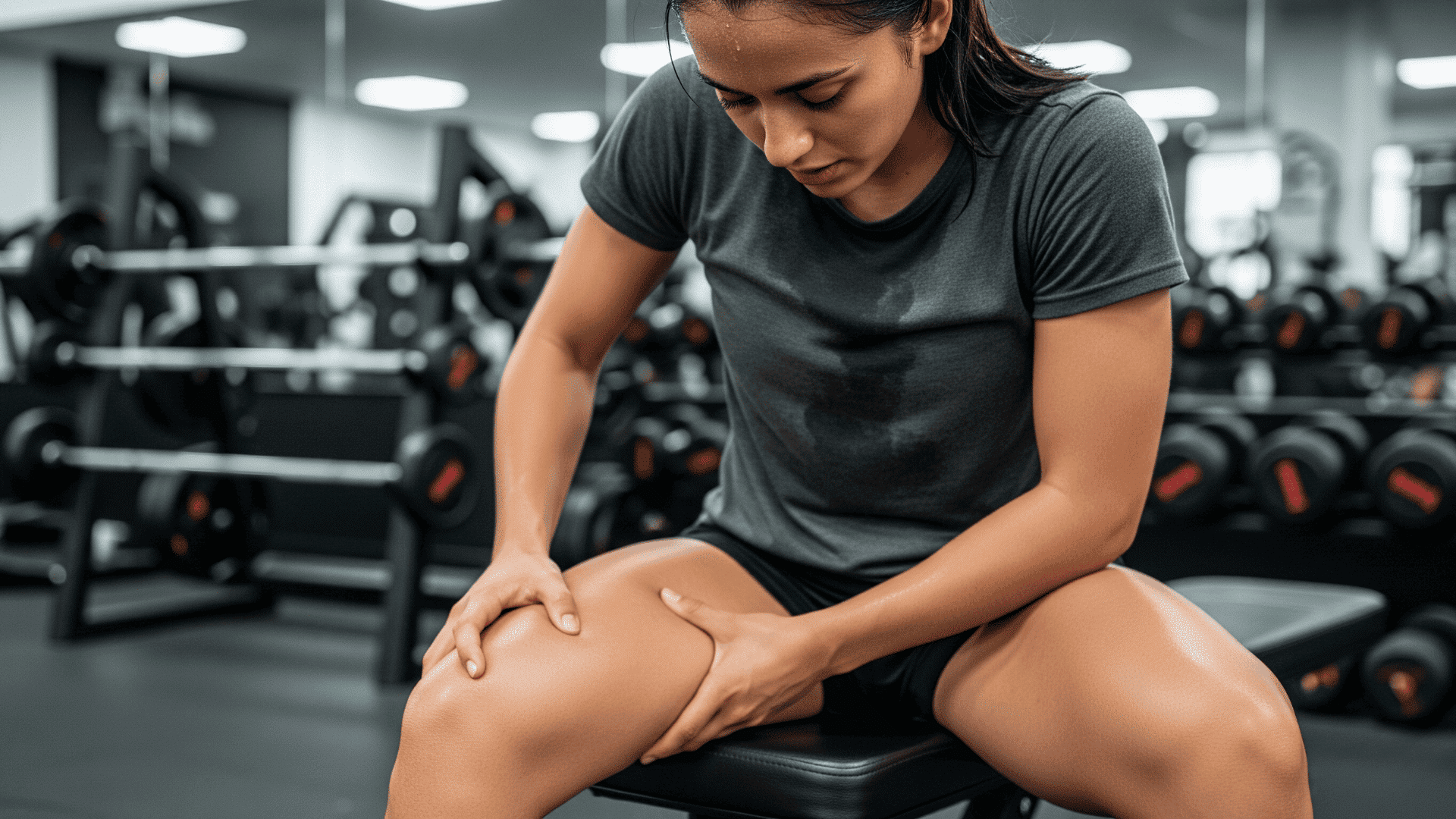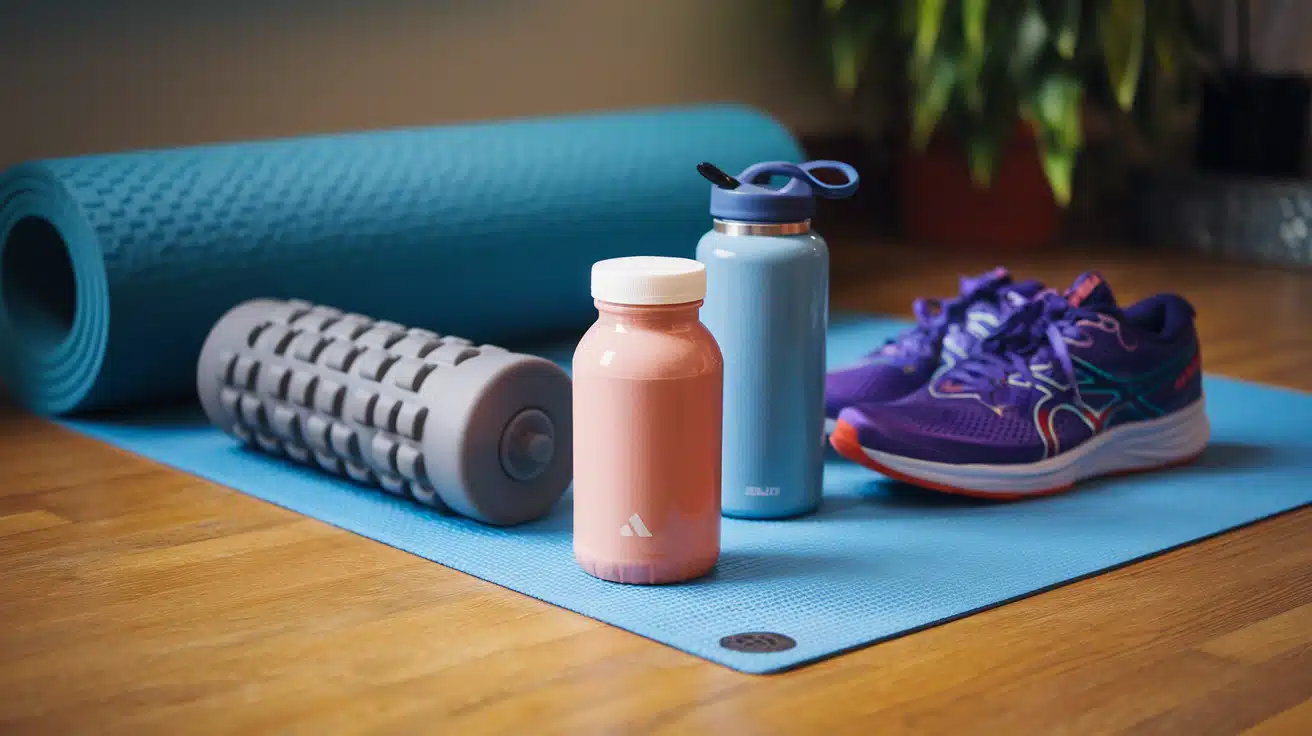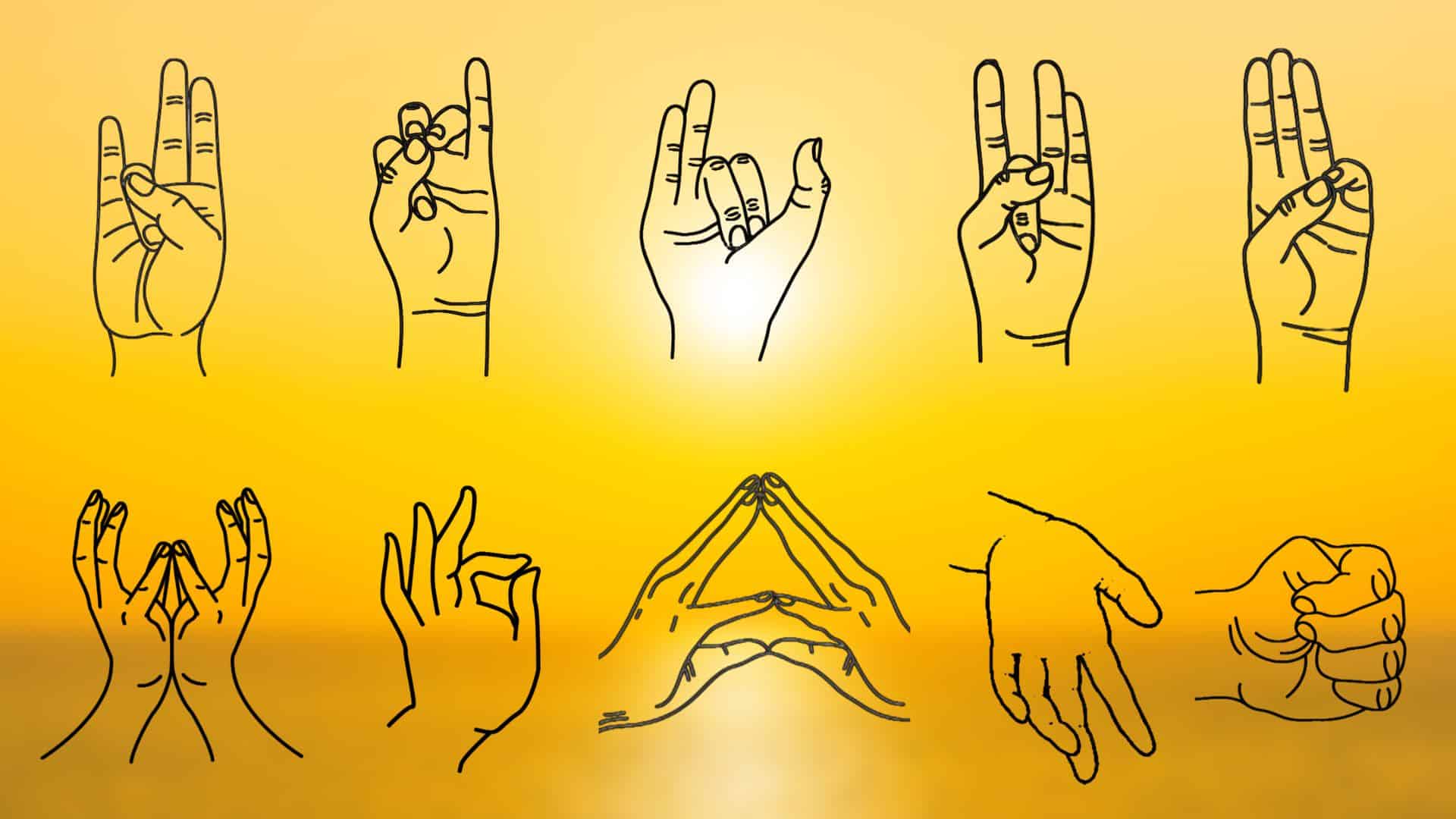That burning ache in your legs after leg day feels like proof you crushed your workout, right?
But here’s something that might surprise you: feeling sore doesn’t always mean your muscles are growing. Many people chase that post-workout pain, thinking it’s the key to bigger, stronger muscles.
The truth about muscle soreness and growth is more complex than most gym-goers realize. Understanding this connection can help you train smarter, avoid unnecessary pain, and actually build muscle more effectively.
Let’s examine what muscle soreness really means for your fitness goals and how to use this knowledge to maximize your results without the guesswork.
What Is Muscle Soreness (DOMS)?
That stiff, achy feeling that hits a day or two after a tough workout?
That’s Delayed Onset Muscle Soreness, or DOMS.
It typically shows up 12 to 72 hours after exercise, especially when you’ve tried something new like your first attempt at deadlifts, a heavier bench press, or a long run.
DOMS isn’t just random discomfort; it’s your body’s response to stress from working out.
Here’s what’s behind it:
-
Microtears: Intense or unfamiliar exercises cause tiny tears in your muscle fibers.
-
Inflammation: Your body’s repair process triggers swelling, which adds to the ache.
-
Connective Tissue Stress: The tissue around your muscles (fascia) gets stressed too, contributing to the soreness.
Forget the myth that lactic acid causes DOMS. That stuff clears out within an hour after your workout. DOMS is all about your muscles and tissues recovering from a challenge.
What Triggers Intense Muscle Soreness?

Not every workout leaves you hobbling. Some things make DOMS more likely to strike:
-
Eccentric Movements: Exercises where muscles lengthen under tension, like the lowering phase of a squat or running downhill, are DOMS magnets.
-
New Routines: Switching from yoga to barbell lifts? Your body’s not used to it, so soreness kicks in.
-
High Intensity or Volume: Lifting heavier weights or doing more reps than usual ramps up muscle stress.
-
Low Fitness Level: Beginners or those returning after a break feel DOMS more because their muscles aren’t conditioned yet.
Does Soreness Mean You’re Building Muscle?
Here’s the big question: Does feeling sore mean your muscles are growing? Not necessarily. Muscle growth, or hypertrophy, happens when your muscles adapt to stress. Three key factors drive it:
-
Mechanical Tension: Lifting heavy weights to challenge your muscles.
-
Metabolic Stress: The “burn” from high-rep sets or short rest periods.
-
Muscle Damage: Those tiny tears that can (but don’t always) cause soreness.
Soreness often comes from muscle damage, but you don’t need to be sore to build muscle. Studies show a weak link between DOMS and actual growth.
For example, muscles like your calves or shoulders can grow without much soreness, while activities like marathon running cause tons of soreness but little hypertrophy.
Plus, as you train regularly, DOMS fades because your body adapts even if you’re still gaining muscle.
|
Myth |
Truth |
|---|---|
|
Soreness = Muscle Growth |
You can build muscle without DOMS, and soreness doesn’t guarantee gains. |
|
More Soreness = Better Workout |
No direct link; consistent progress matters more than pain. |
When Is Soreness a Good Sign?
Soreness isn’t always a villain. It can be a positive signal in some cases:
-
New Challenges: Soreness after trying a new move, like pull-ups or lunges, shows you’re pushing your muscles in a fresh way, which can spark growth.
-
Targeted Feedback: Feel it in your quads after squats? That’s a sign you’re hitting the right muscles. If your lower back’s sore instead, you might need to tweak your form.
-
Motivation Boost: For beginners, that achy feeling can feel like proof you’re working hard, keeping you pumped to stick with it.
But don’t get too hung up on it. Soreness is just one clue, not the whole picture of progress.
When Should You Worry About Soreness?
Chasing soreness as if it were the key to gains can lead you astray. Always feeling wrecked after workouts might mean you’re overtraining, which can stall your progress or lead to injuries. You don’t want to be stuck on the sidelines.
Watch for these warning signs:
-
Prolonged Pain: Normal DOMS fades in 2-5 days. If it lasts longer, something’s off.
-
Sharp or Intense Pain: If it feels like more than muscle ache, it could be an injury.
-
Swelling or Bruising: These aren’t part of regular DOMS. See a doctor promptly.
-
Constant Fatigue: Always sore and exhausted? You might be pushing too hard without enough recovery.
Obsessing over soreness can also lead to bad habits, like using sloppy form just to feel something. That’s a recipe for trouble.
How to Ease and Manage DOMS
Nobody loves waddling around like a stiff robot. If DOMS is hitting you hard, try these practical, science-backed tips to feel better:
-
Active Recovery: Engaging in light activities like walking, stretching, or yoga helps boost blood flow and alleviate stiffness.
-
Massage or Foam Rolling: Spend 10-15 minutes with a foam roller or treat yourself to a massage. A warm bath works too.
-
Nutrition: Eat protein (like chicken, eggs, or a shake) and carbs (like rice or fruit) within an hour post-workout to fuel muscle repair.
-
Gradual Progression: Don’t go from zero to hero. Slowly increase weights or reps to keep soreness in check.
-
Rest and Sleep: Give sore muscles a day or two off from heavy lifting. Aim for 7-9 hours of sleep to let your body recover.
|
Method |
How It Helps |
Example |
|---|---|---|
|
Active Recovery |
Boosts blood flow to reduce stiffness |
15-minute walk or light yoga session |
|
Foam Rolling |
Relaxes tight muscles |
Roll quads for 10 minutes |
|
Nutrition |
Supports muscle repair and recovery |
Post-workout shake with protein and banana |
Better Ways to Track Muscle Growth
Soreness isn’t a reliable way to know if your workouts are paying off. Instead, focus on these signs of progress:
-
Progressive Overload: Gradually increase weights, reps, or sets over time. This is the #1 driver of muscle growth.
-
Strength Gains: Lifting heavier or doing more push-ups than last month? You’re getting stronger.
-
Visible Changes: Look for noticeable increases in muscle size or a more defined appearance over the course of weeks or months. Progress photos or a tape measure can help.
-
Recovery Readiness: Feeling fresh and energized for your next workout means you’re balancing training and rest right.
These are way more accurate than hoping to feel sore after every gym session.
How to Train Smart Without Chasing Soreness
You don’t need to feel wrecked to make gains. Here’s how to train smarter for muscle growth:
-
Plan Progressive Overload: Add a little weight or a few reps over time. For example, if you bench 100 lbs for 8 reps this week, aim for 10 reps or 105 lbs next week.
-
Introduce New Moves Gradually: Try new exercises like kettlebell swings, but ease into them to avoid extreme DOMS.
-
Prioritize Form: Good technique targets the right muscles and reduces injury risk. Record yourself or ask a trainer for feedback.
-
Balance Work and Rest: Train hard 3-5 days a week, but include rest days and aim for 7-9 hours of sleep to recover.
Nutrition to Fuel Muscle Growth and Recovery
Your diet is a game-changer for building muscle and managing DOMS. Here’s what to focus on:
-
Protein: Aim for 0.7-1 gram per pound of body weight daily. Think chicken, fish, eggs, tofu, or a protein shake.
-
Carbs: Fuel your workouts and recovery with carbs like oats, rice, sweet potatoes, or fruit.
-
Hydration: Drink plenty of water (aim for 8-10 cups daily) to keep muscles flexible and support recovery.
-
Timing: Eat a protein- and carbohydrate-rich meal within one hour post-workout, such as grilled chicken with rice and vegetables.
Sleep is huge too—7-9 hours a night is when your body does most of its repair and growth work.
When to Seek Professional Help
Most muscle soreness is just part of the process, but sometimes it’s a sign you need expert help.
If your soreness lasts longer than five days or keeps getting worse, it’s not typical DOMS and could point to a bigger issue.
Sharp, intense pain that feels different from regular muscle aches might mean a strain or injury, especially if you notice swelling or bruising.
Those aren’t normal and warrant a doctor’s visit right away. Struggling with proper form during lifts?
That could be causing unnecessary soreness or even setting you up for injury, so working with a certified trainer to correct your technique is a smart move.
A trainer can also design a personalized workout plan to help you build muscle efficiently, minimizing pain while maximizing gains.
Tips for Beginners to Avoid Overwhelm
If you’re new to the gym, soreness can feel intense and even discouraging. Here’s how to start strong:
-
Start Light: Use lighter weights or bodyweight exercises to build form and confidence.
-
Learn Proper Form: Watch tutorials or work with a trainer to nail your technique early.
-
Rest Enough: Take at least one rest day between strength sessions to let your muscles recover.
-
Be Patient: Muscle growth takes time. Focus on consistency, not soreness.
Conclusion
So, is being sore a good sign of muscle growth? Not always. While soreness can indicate you’ve challenged your muscles, it’s not a reliable measure of progress. You can build strong, lean muscle without feeling wrecked after every workout.
Focus on what truly matters: lifting heavier weights over time, eating enough protein, and getting quality sleep. Track your strength gains, take progress photos, and listen to your body’s recovery signals instead of chasing pain.
Remember, consistency beats intensity every time. A well-planned routine that you can stick to will deliver better results than constantly pushing yourself to soreness.
Ready to build muscle the smart way? Start tracking your lifts today and watch your strength grow with or without the ache.
Looking for more wellness tips & strategies? Browse Recovery & Wellness for evidence-based relief tips









